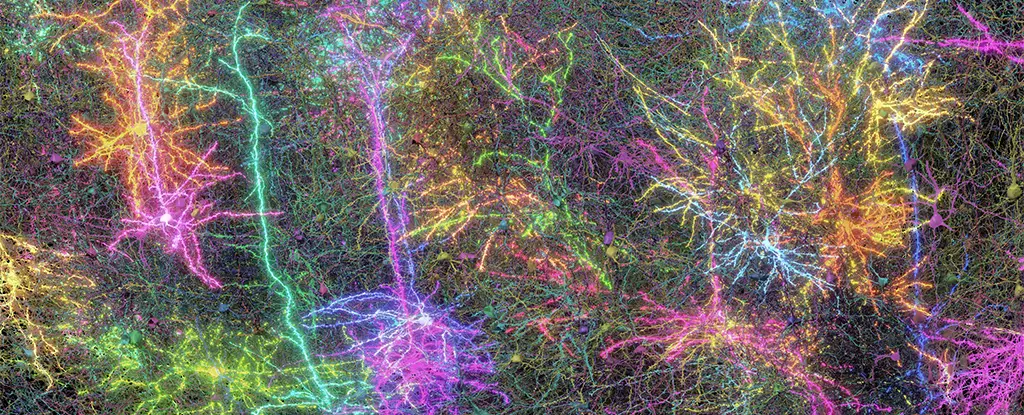Delving into the intricacies of the human brain stands as one of the most daunting intellectual pursuits. This complexity can be likened to an uncharted universe—vast, intricate, and notoriously difficult to fathom. Recent developments in neuroscience, particularly a groundbreaking study involving the detailed mapping of a mouse brain, illuminate just how far we’ve come in understanding our neural architecture. This study, akin to peering into the cosmos, unveils a minuscule yet profoundly intricate part of the neurological puzzle, shedding light on the brain’s functional and structural relationships.
While the sample size may have been a mere grain of sand in the grand landscape of brain research, the findings derived from this meticulous dissection are monumental. An astonishing 84,000 neurons linked by half a billion synaptic connections paint a vivid picture of neural communication. This monumental achievement is not just another scientific endeavor but a significant leap in our quest to decode the enigma of human cognition. The enormity of the task at hand—spanning nearly a decade and involving a substantial collaborative network of researchers—highlights an essential truth: grasping the brain’s complexity requires collective genius.
Bridging Structure and Function
At the heart of this research lies a powerful revelation: understanding the brain’s architecture is inextricably linked to the way it operates. Neuroscientist Andreas Tolias aptly summarized this juxtaposition, emphasizing the study’s capacity to marry structure with function. By revealing not only the physical layout of neuron wiring but also the dynamic interactions between these neural pathways, this research propels us closer to comprehending our very essence as sentient beings.
The experimental design is notable. The mouse was subjected to stimulating visual content while navigating a treadmill, illustrating an innovative approach to concurrently observe brain activity and behavior. This insightful method underscores the notion that the brain is not merely a static entity to be dissected but a vibrant network, intricately engaged with the environment. Dissecting the brain into 28,000 layers and employing advanced AI techniques to analyze the data takes a step into the future of neuroscience, providing us with a rich tapestry of neural connections known as the connectome.
A Leap Toward Human Understanding
This project has cemented itself as a cornerstone in the ongoing journey toward mapping the human brain. Although earlier attempts to render the connectome of simpler brains, like those of insects, have laid the groundwork, the complexity newfound in this mammalian analysis elevates our aspirations. For the first time, we possess a robust framework to ponder the nuanced architecture that defines our consciousness. This leap does not merely augment our knowledge; it redefines our ambitions to understand human cognition at an unprecedented level.
Moreover, the implications extend far beyond mere academic interest. In a world where artificial intelligence is increasingly encroaching on human cognitive territory, studying our brain’s unparalleled efficiency might equip us with the insights needed to harness and improve AI technology. Understanding the intricate pathways of human thought could inform the design and function of AI systems, pointing toward a synthesis between biological intelligence and computational prowess that has yet to be fully realized.
The Future of Neuroscience and Mental Health
Perhaps the most compelling aspect of the research is its potential in the field of mental health. The project’s authors, including prominent neuroscientists like H. Sebastian Seung, emphasize the promise of identifying abnormal connectivity patterns that can lead to psychiatric disorders. The implications here are vast and critical. As we digitize and map the brain in greater detail, we inch closer to understanding the mechanisms behind complex conditions such as dementia, depression, and schizophrenia.
Nothing is more vital than the hope this research instills in families and individuals grappling with mental health challenges. A deeper understanding of the brain might translate to more effective treatments, ushering in a new era of personalized medicine where therapeutic strategies are guided by the unique neural wiring of patients. The ongoing digital transformation in brain science could very well be the key that unlocks the mysteries of human suffering, setting a precedent for a future where compassion and scientific inquiry work hand in hand.
In an age characterized by both scientific advancement and societal challenges surrounding mental health, this research exemplifies the potential of neuroscience to shape our understanding of what it means to be human in the most profound way.

Leave a Reply